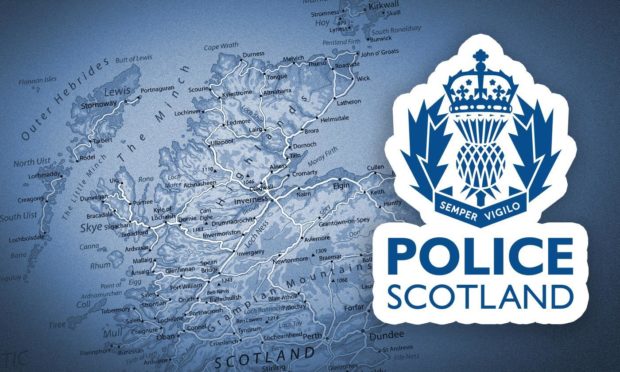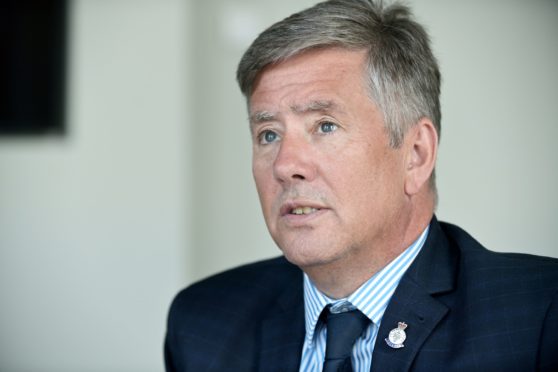The Western Isles recorded a 31% jump in crime in the last year, while Orkney, Shetland and Aberdeenshire were among the country’s biggest fallers, according to statistics recently released by the Scottish Government.
The increase in the Outer Hebrides between 2019-20 and 2020-21 is the largest in Scotland – although the percentage is more sensitive to fluctuations due to its smaller population.
Meanwhile, crime decreased by 7% in Aberdeenshire and Shetland, and 9% in Orkney – the second-largest drop in the country, behind Edinburgh.
The Western Isles was one of only three local authorities with an increase of more than 10%, rising from 414 recorded crimes in 2019-20 to 533 in 2020-21.
Chief Inspector Alasdair MacLeod, local area commander for the Western Isles, said: “The Western Isles remains one of the safest places to live in Scotland and I want to reassure the community that police officers remain committed to keeping people safe.”
Even including the recent increase, the crime rate in the Western Isles per 10,000 population is 205, the third lowest in the country behind only Shetland and Orkney.
Annual crime report
The statistics were released on Tuesday in a Scottish Government report entitled Recorded Crime in Scotland, 2020-21, which provides an analysis of law-breaking in Scotland over the past 12 months.
Among other revelations, the reports shows that the total number of crimes recorded in the country in that time decreased from the year before – by just five.
There were 246,516 crimes recorded by the police in 2019-20, and 246,511 recorded in 2020-21.
Covid restriction-related offences
However, excluding breaches of coronavirus restrictions, crime actually fell over by 8% over the period.
The two parts of the country with the lowest rates of Covid crime were both in the north-east: Moray and Aberdeenshire.
Compared to the Scottish rate of 38 restriction-related crimes per 10,000 population, Moray had seven and Aberdeenshire had just six.
Low crime rates
Five of the six local authority areas with the lowest crime rates over the past year were located in the north or north-east, with Aberdeenshire and Moray fifth and sixth from the bottom respectively.
Aberdeen City was the only area in the north or north-east with a crime rate higher than Scotland’s, which is 451 per 10,000 population – it recorded a rate of 513, which is the sixth highest among the country’s 32 local authorities.
The Highlands, meanwhile, had a rate of 319 which is roughly the same as that of the Scottish Borders.
Crimes solved in north and north-east
The north and north-east also have relatively high crime-solving rates, with all areas above the Scottish rate of 56.3%.
Despite what a certain BBC crime drama might have you believe, Shetland has the highest rate of crimes ‘cleared up’ by the police, with 83% – almost 10% more than Orkney, which has the second highest with 73.1%.
Even Aberdeen, which has the lowest rate in the area with 60.3%, comfortably beats the total for the entire country.
Report largely shows decline in law-breaking
The Recorded Crime in Scotland report shows the number of non-sexual crimes decreased by 4% from the previous year, while sexual crimes decreased by 2% – though they remain at the third-highest level since 1971.
Crimes of dishonesty – which includes housebreaking, theft and fraud – fell by 19% to 89,731. It is the first time this figure has been below 110,000 since 1971, the earliest year included in the report.
However, cyber crime has gone in the opposite direction, almost doubling in the past year from 7,240 incidents in 2019-20 to 14,130 in 2020-21.
The report suggests this may be the result of behaviour changes due to the pandemic, such as increased online shopping.
‘Shocking reading’
Scottish Conservative shadow cabinet secretary for justice, Jamie Greene MSP, said those who commit fraud online should face tougher sentences.
He said: “These annual figures make for shocking reading.
“Vulnerable people across Scotland are being ripped off and left devastated by fraudsters.
“That is exactly why we want criminals who commit such heartless acts to receive tougher sentences.
“The SNP Government’s soft-touch approach is letting down vulnerable people, which is why we are proposing a Victims Law to put victims of crime at the heart of the justice system.”
Trends are ‘very positive’
Justice Secretary Keith Brown said: “By all main measures crime, including violent crime, is now considerably lower than it was a decade ago, with fewer victims.
“These statistics show how crime in areas like vandalism and dishonesty, the sorts of crime that affects peoples’ everyday lives, has fallen – with levels not seen since the 1970s.
“There is still work to be done as the figures on cybercrime show – which is why we have this year published a prevention, awareness and enforcement strategy to make Scotland an inhospitable place for scammers.
“Overall, these very positive trends are testimony not just to the hard work of Police Scotland but to the vital support the Scottish Government has put in place to enable officers to do their jobs effectively.”

